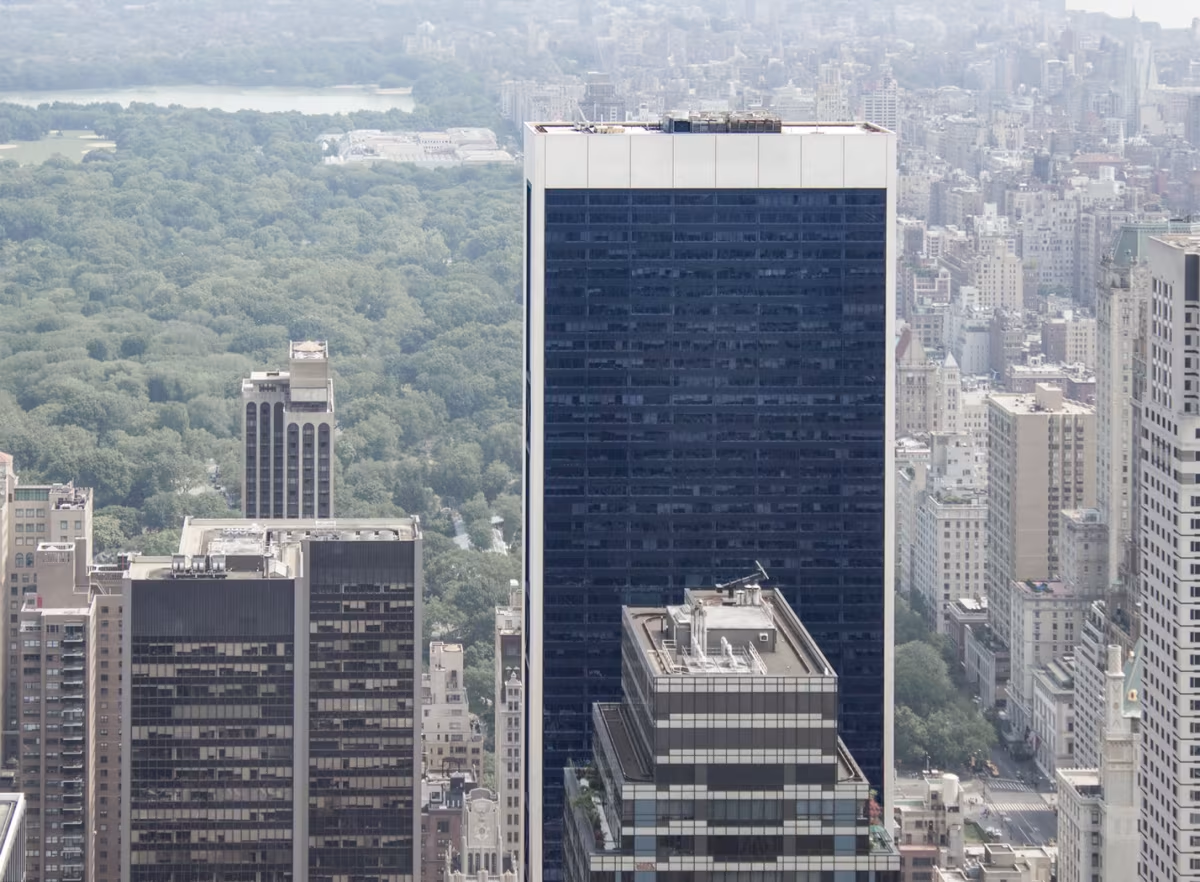Solow Building vs Random House Tower


Comparing the Solow Building and the Random House Tower is particularly interesting because they share the same skyline in New York, NY, and were both designed by Skidmore, Owings & Merrill. However, they were completed more than 29 years apart.
This offers a unique perspective on how the architect's style and the city's architecture evolved over time.
Height & Size
The Random House Tower is clearly the larger tower of the two, both in terms of height and number of floors. It rises to 682ft (208m) with 52 floors above ground, while the Solow Building reaches 673ft (205m) with 49 floors above ground.
Of course, each project may have faced different briefs or regulatory constraints, which we don't really know about and could also explain the outcome.
Architectural Style
The Solow Building was designed in the Modern style, while the Random House Tower reflects the principles of Contemporary.
The Solow Building represents a late expression of the Modern, a style already in decline in 1974 when it was completed. By contrast, the Random House Tower followed the then mainstream Contemporary, embodying the dominant architectural direction of its time.
With 29 years between them, the comparison also reflects how quickly architectural priorities can shift from one dominant language to another.
Uses
The Random House Tower follows a mixed-use model, combining commercial and residential. In contrast, the Solow Building has remained primarily commercial.
The Random House Tower offers 101 residential units.
The Random House Tower also provides 150 parking spaces.
Structure & Facade
The two towers rely on different structural systems, reflecting distinct engineering strategies.
The Solow Building uses a Trussed Frame structural system, which uses diagonal bracing in addition to beams and columns for stability, while the Random House Tower uses a Frame system, that relies on a regular grid of columns and beams to sustain its weight.
Yet, when it comes to their facade, they both employed the same solution, a Curtain Wall facade.
A curtain wall is a non-load-bearing facade hung from the structural frame. It is anchored to floor slabs and transfers only its own weight and wind loads, allowing for sleek, glassy exteriors.
| Solow Building | Random House Tower | |
|---|---|---|
| Skidmore, Owings & Merrill | Architect | Skidmore, Owings & Merrill |
| 1968 | Construction Started | 2000 |
| 1974 | Year Completed | 2003 |
| Modern | Architectural Style | Contemporary |
| Commercial | Current Use | Mixed |
| 49 | Floors Above Ground | 52 |
| 1 | Floors Below Ground | 2 |
| 205 m | Height (m) | 208 m |
| Trussed Frame | Structure Type | Frame |
| Steel | Vertical Structure Material | Steel And Reinforced Concrete |
| Concrete And Steel | Horizontal Structure Material | Reinforced Concrete |
| No | Facade Structural? | No |
| Glass, Marble, Aluminium | Main Facade Material | Glass, Steel, Aluminum |
| Solow Construction Co. | Main Contractor | Plaza Construction Corporation |
| Solow Development Corporation | Developer | Steve Ross |
| Weidlinger Associates | Structural Engineer | Thornton Tomasetti |
| NY | State | NY |
| New York | City | New York |
| 9 West 57th Street | Address | 1739 Broadway |